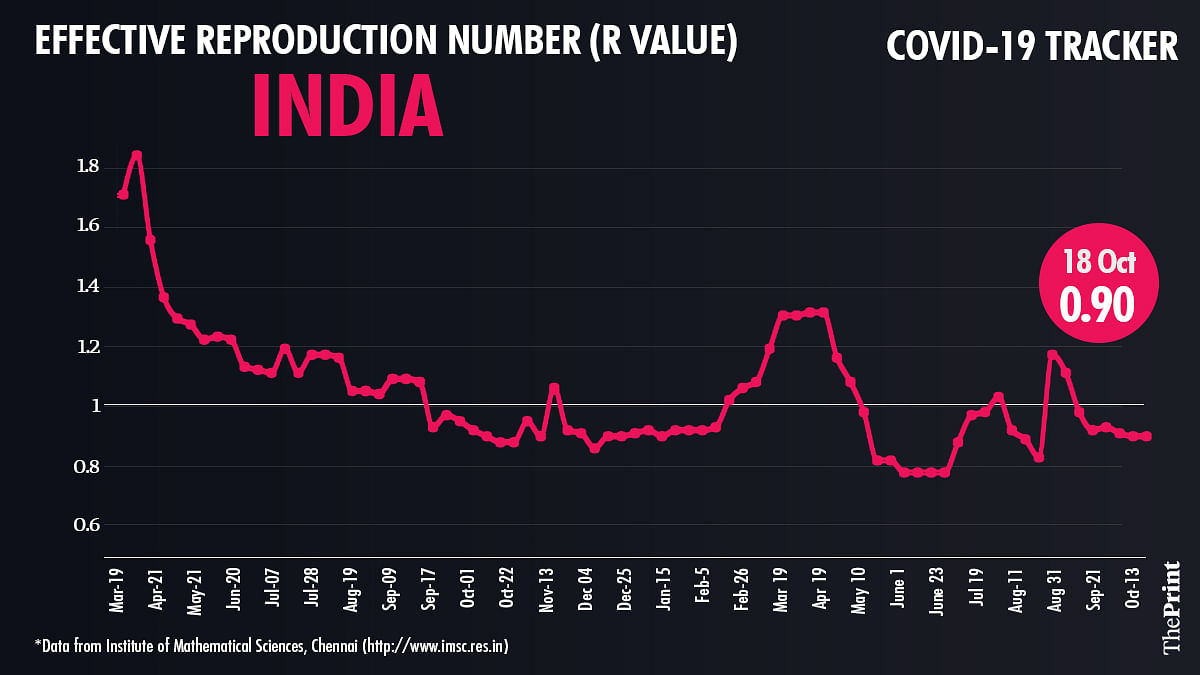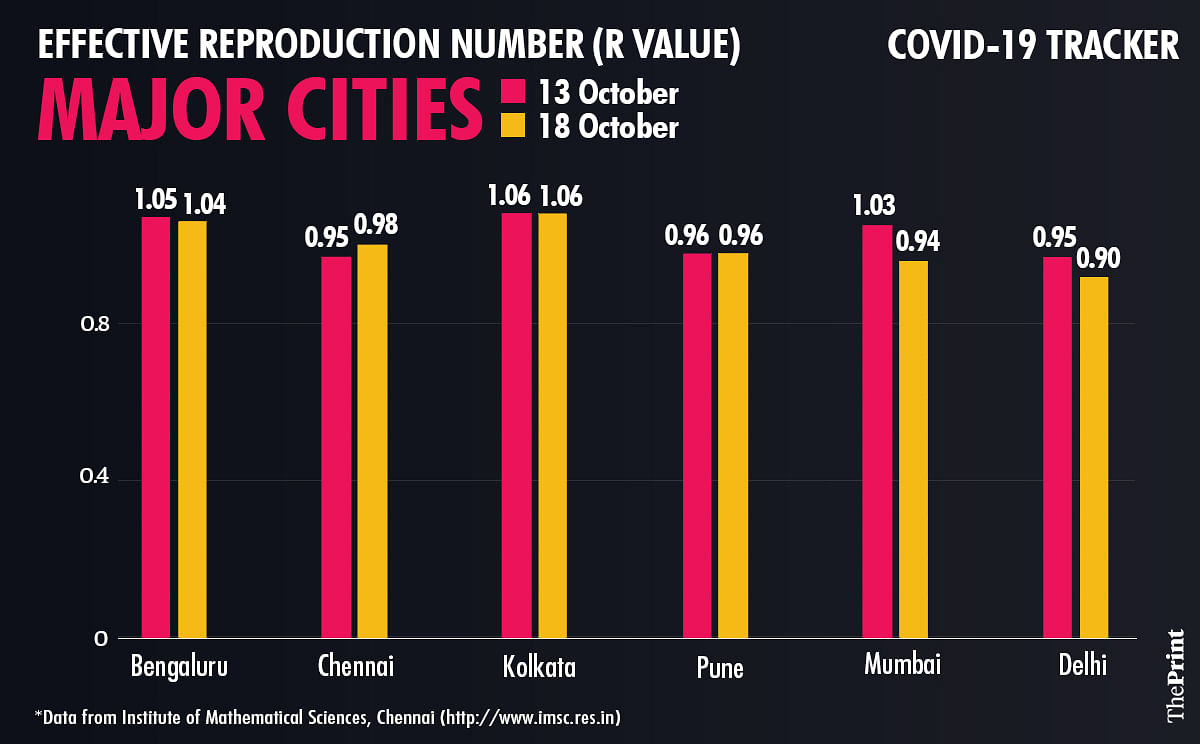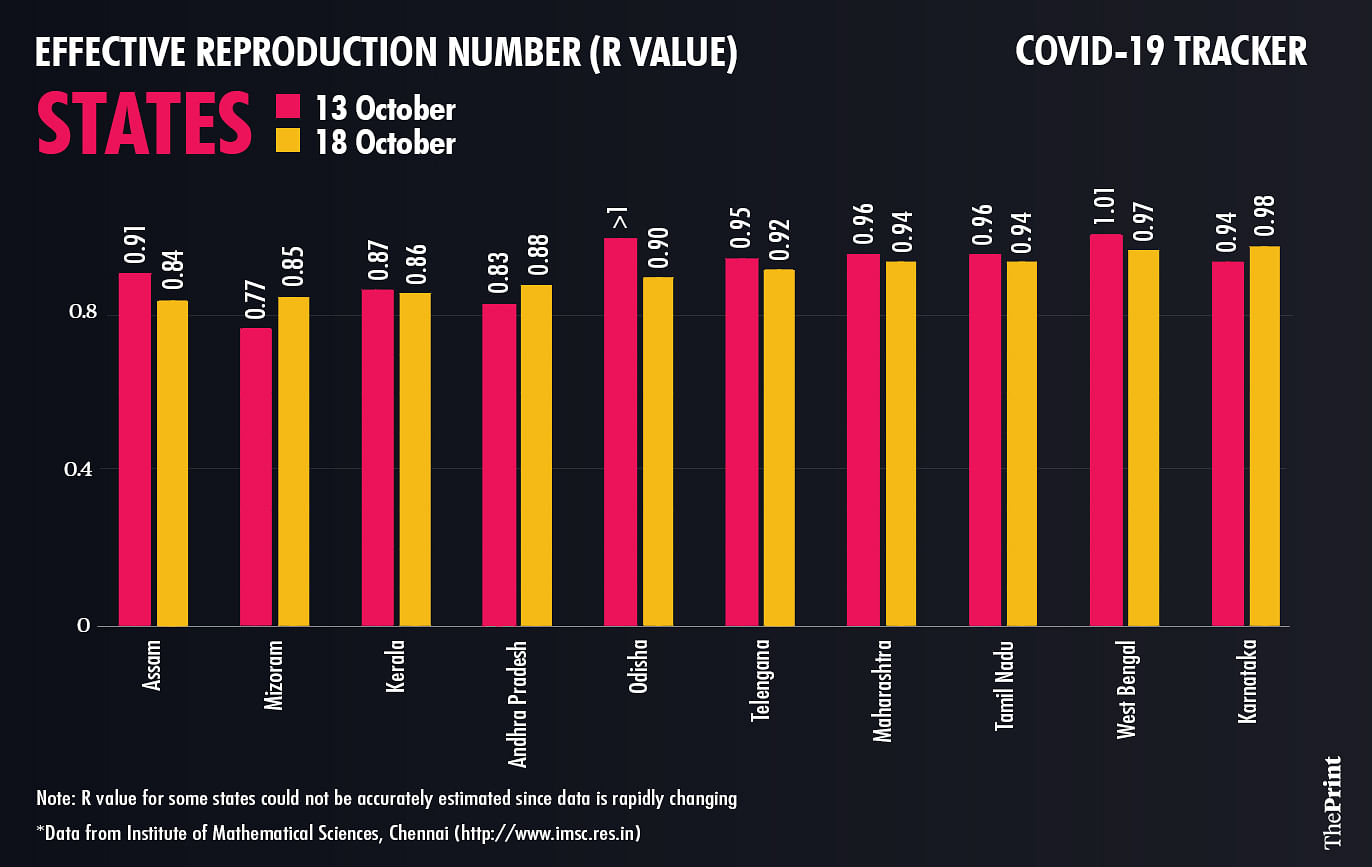Form of words:
New Delhi: Even as India’s active Covid caseload hit its lowest since March 2020 – it stood at 1,83,118 Tuesday – the R value, which is a measure of the rate of spread of the disease, stood at 0.90 from the previous week. remains stable. Not only at the national level, but also in the top 10 states with the most active cases, the number remains below 1.

However, some cities, including Kolkata, which have opted out of Durga Puja festivities – are still showing an increasing number of active cases. Kolkata has an R value of 1.06 (estimated over 29 September-18 October), Bengaluru 1.04 (estimated over 13-18 October), Delhi 0.90 (estimated over 9-18 October), Pune at 0.96 (estimated over 9) . -18 October) and Chennai at 0.98 (estimated over 13-18 October).

The R, or effective reproduction number, is the average number of people who are likely to be infected by a sick person. For an epidemic to end, R must be below 1. These figures have been calculated by Sitabhara Sinha, a researcher at the Institute of Mathematical Sciences in Chennai, who has been tracking R values since the beginning of the pandemic.
In a statement issued on Tuesday morning, the Press Information Bureau said: “The active caseload has fallen below the two lakh mark and currently stands at 1,83,118, which is now the lowest since March 2020. The active cases presently take the country’s total.” are 0.54 per cent of the positive cases.”
Read also: Government set to celebrate 100 crore vaccine doses, but October numbers are lowest since July
R value varies across states
While Kerala still accounts for the highest number of active cases in the country, the pandemic is waning there too. The state had an R value of 0.86 for the period 25 September–18 October, while that of Maharashtra was 0.94 (estimated over 21 September–18 October).
In West Bengal The R value for October 13-18 was 0.97, while in Odisha – which also saw Durga Puja celebrations – the figure was 0.90 (estimated over the period 15-18 October). Both numbers are down from earlier figures of 1.01 and more than 1 respectively (exact count is not available).

However, the festival celebrated between October 11-15 in both the states may still take some time to show its real impact as the incubation period of SARS-CoV2 virus can be up to 14 days. Calculated on 13-17 October, the R value in Assam was 0.84.
Among the states, the highest R value was in Karnataka, where it came down to 0.98 when calculated for the period 17-18 October.
(Edited by Polomi Banerjee)
Read also: Now, a COVID marker that can predict the severity of an infection even before it becomes infected
subscribe our channel youtube And Wire
Why is the news media in crisis and how can you fix it?
India needs independent, unbiased, non-hyphenated and questionable journalism even more as it is facing many crises.
But the news media itself is in trouble. There have been brutal layoffs and pay-cuts. The best of journalism are shrinking, yielding to raw prime-time spectacle.
ThePrint has the best young journalists, columnists and editors to work for it. Smart and thinking people like you will have to pay a price to maintain this quality of journalism. Whether you live in India or abroad, you can Here.